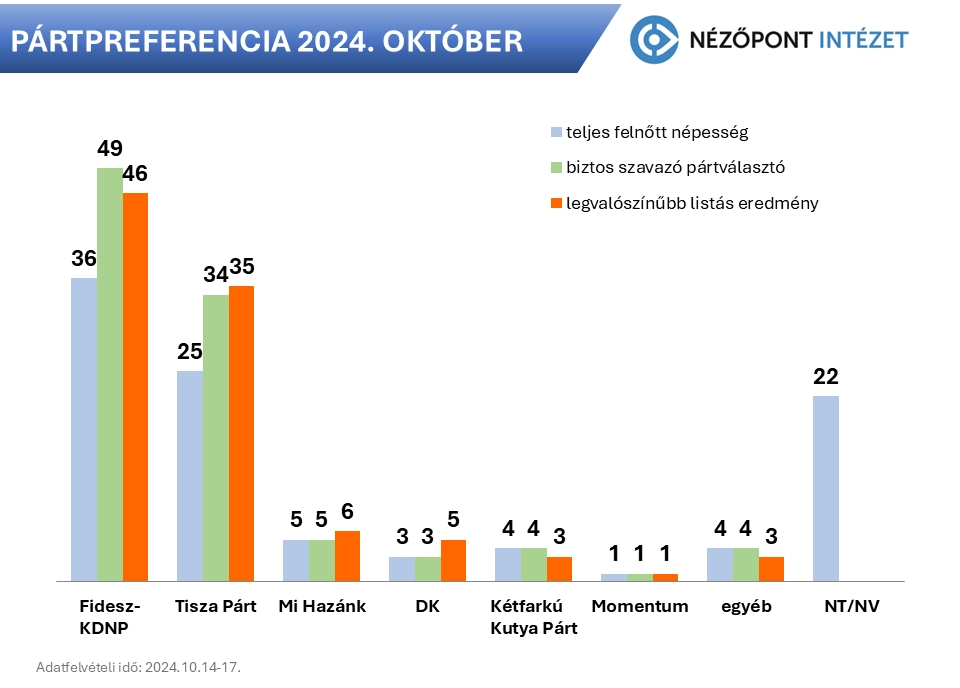The state of the party race has remained unchanged since the end of September. The Fidesz-KDNP (46 percent) continues to lead ahead of the Tisza Party (35 percent), Our Homeland Movement (6 percent) and the Democratic Coalition (5 percent). A four-party parliament would still be formed if parliamentary elections were held this Sunday.
According to a recent poll conducted by the Nézőpont Institute between 14 and 17 October following the European Parliament debate, the balance of power has remained unchanged compared to the previous month. Different polling institutes publish party preference polls on different bases, so in addition to the most likely list results, we have examined the support for each party on the basis of the total adult population and also on the basis of voters who are certain to vote, as is usual by other institutes.

Among the total adult voting-age population, Fidesz-KDNP has a support base of 36 percent, while the Tisza Party has 25 percent, the Our Homeland Movement 5 percent and the Democratic Coalition only 3 percent. However, this base does not correspond to the proportions of the actual party race, as it does not take into consideration either the voter turnout or the hidden voters.
The ‘most likely list result’ used by the Nézőpont Institute takes into account all respondents who are certain to vote in the election. Hidden voters, who, for some reason, do not disclose their party preference, are identified by using a statistical method based on their other responses. Based on disclosed party preferences and identified voters, the most likely list result for Fidesz-KDNP would be 46 percent, roughly the same as its support before the flood (45 percent) and during the flood (47 percent). The Tisza Party's most likely list result (35 percent) would be eleven percentage points below that of the governing parties, which is the same as before the flood. Among the opposition parties, only the Our Homeland Movement (6 percent) and the Democratic Coalition (5 percent) would also get into the parliament.
Several polling institutes use the ‘base of voters who are certain to vote’ to describe the most likely outcome, which means they measure party support only among those who are certain to vote in the election and even name a party they would vote for. On this basis, Fidesz-KDNP stands at 49 percent, followed by Tisza Party with 34 percent, the Our Homeland Movement with 5 percent, and, on the basis of this model, the Democratic Coalition (3 percent) would not even get into the parliament. However, this base does not take into account those voters who would participate in the elections but, for some reason, do not disclose their party preference and thus remain hidden.
Methodology
The latest opinion-poll of the Nézőpont Institute was conducted between 14 and 17 of October, 2024, by interviewing 1,000 respondents by phone. For all surveys, the sample is representative of the adult population (18 years and older) by gender, age, region, type of settlement and education. In case of a sample size of 1000 respondents and a confidence level of 95 percent, the margin of sampling error is ± 3.16 percent. The data have been rounded to the nearest whole number, so their sum may not add up to exactly 100.

